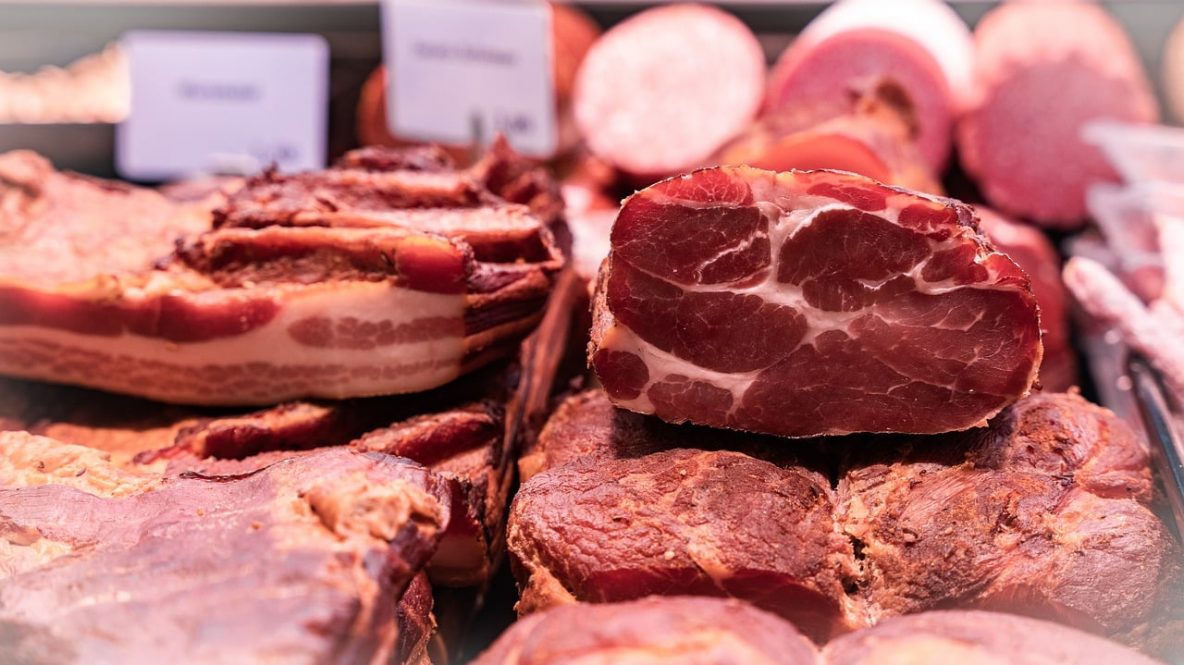A new $650,000 grant led by two faculty members from the College of Agriculture, Health and Natural Resources (CAHNR) will investigate how a common dietary supplement can improve the quality of meat from cattle with hypertension.
Chaoyu Zhai, assistant professor, and Sarah Reed, associate professor, in the Department of Animal Science are leading this grant from the National Institute of Food and Agriculture’s (NIFA) Agriculture and Food Research Initiative (AFRI).
The grant will investigate if Vitamin E can help combat the phenomenon of meat from cattle with high pulmonary arterial pressure (PAP) discoloring faster.
“With my interest in muscle biology and Zhai’s interest in meat science, we’re really interested in how it impacts the meat quality,” Reed says. “And the grant tries to address that with Vitamin E.”
High PAP is most common in cattle living at high altitudes. This is because these cattle are more likely to experience low-oxygen conditions. But high PAP becoming increasingly common in cattle at all altitudes.
Just like in humans, high blood pressure, or hypertension, can lead to death. It may also may negatively impact the quality of the meat the animals produce.
Preliminary research by Zhai showed that steaks made from cattle with hypertension discolored two days earlier than those from cattle with normal blood pressure. While discoloration is not a perfect indicator of the meat’s freshness, nonetheless, it is unappealing to consumers.
“Because the consumer is very picky about what they’re getting, if the steak doesn’t look good, they’re not going to buy it,” Zhai says.
The U.S. wastes approximately $3.73 billion each year from meat that is thrown out because it is discolored, the equivalent of 780,000 cows.
“Not just meat, any quality-defected food can cause issues because we produce it, and it never becomes anybody’s food,” Zhai says. “And of course, it represents a large amount of resources we invested during production. It’s such a waste.”
The goal of this grant is to support sustainable agricultural development in the U.S. by reducing waste from discolored meat.
With this grant, the research team will provide cattle with Vitamin E supplements.
Vitamin E is an antioxidant, meaning it directly combats the oxidative processes that cause meat to discolor.
Oxidation is caused by oxygen-containing molecules known as “free radicals.” Free radicals will try to bind with proteins and cell membranes in the body inhibiting normal functioning.
Vitamin E has an affinity for free radicals, meaning it binds with them, preventing them from doing that damage.
The team decided to focus on Vitamin E because their preliminary data supports its effectiveness at lowering blood pressure in cattle. Further, it is already approved by the FDA for humans, making it an acceptable and affordable supplement for producers and consumers.
“If we can demonstrate that Vitamin E is working and has a lot of benefits, it would be very valuable for [producers in areas with high-PAP cattle] to include Vitamin E because, yes, they will spend some money on the supplementation, but they will get that back,” Zhai says.
We know Vitamin E has many beneficial impacts on animals, but we also want to know if this supplement provides any ‘hidden’ benefits when the animal has hypertension — Chaoyu Zhai
Preliminary findings showed that when the cattle were fed Vitamin E, the muscle tissue not only had a better ability to fight off the degradation caused by free radicals, it also changed the protein profile in the mitochondria.
“Vitamin E’s role in the muscle or tissue is not only as an antioxidant, but it also makes the tissue grow smarter, so they don’t produce as many free radicals,” Zhai says.
This intervention could also improve the cattle’s feed efficiency – meaning they could eat less and still grow the same amount of muscle, saving producers money.
“Vitamin E can help support healthy muscle growth and overall health,” Reed says. “When you have an animal who is less stressed and not fighting off inflammation as much, then they have more energy available to put into muscle growth.”
Working with the ruminant nutritionist Terry Engle from Colorado State University (CSU), the researchers will evaluate the feed efficiency and growth performance of each animal.
“We know Vitamin E has many beneficial impacts on animals, but we also want to know if this supplement provides any ‘hidden’ benefits when the animal has hypertension,” Zhai says.
The researchers will analyze muscle cells from the cattle before and after they are given the supplement. They will work with Jeremy Balsbaugh, the director of the UConn COR²E (Center for Open Research Resources and Equipment) to complete these analyses.
“He [Balsbaugh] will be a fantastic collaborator for us to look at the molecular fingerprint of the proteome, which is the whole population of the proteins in a tissue,” Zhai says.
Collaborating with other scientists from CSU, Adam Chicco in mitochondria biology and Mahesh Nair in food chemistry, the team will also measure mitochondrial respiration and byproducts to determine how effectively these essential cellular components are working.
They will also look at how quickly the meat discolors and how it tastes compared to meat from high-PAP animals that did not receive the supplement.
Another potential benefit of Vitamin E supplements that this study will not evaluate is that it may reduce death of cattle with hypertension.
“I am very proud of this passionate team we have built between UConn and CSU,” Zhai says. “Our comprehensive skills and diverse research backgrounds will maximize the scientific output from this grant and make bigger impacts on U.S. animal food production.”



